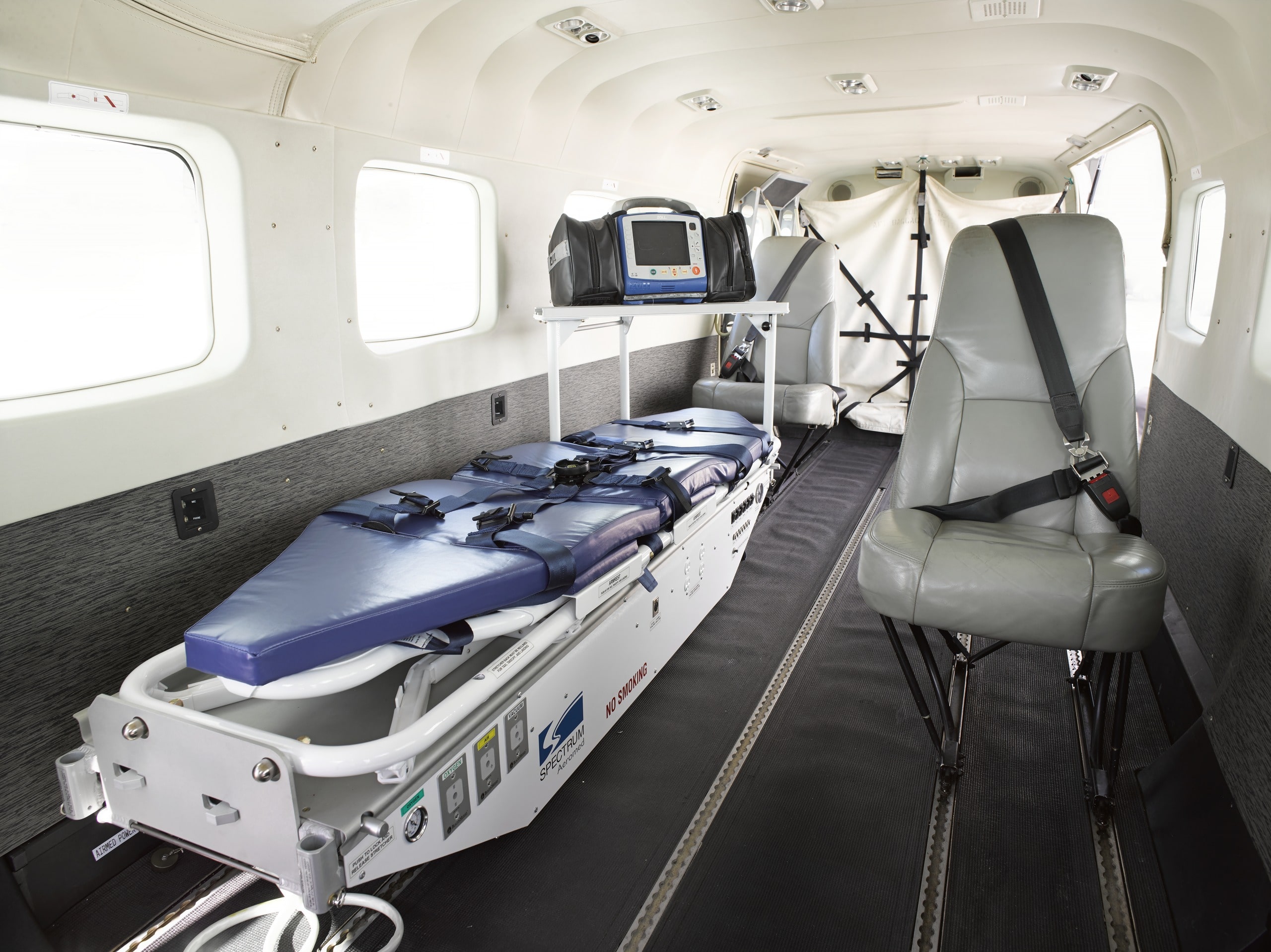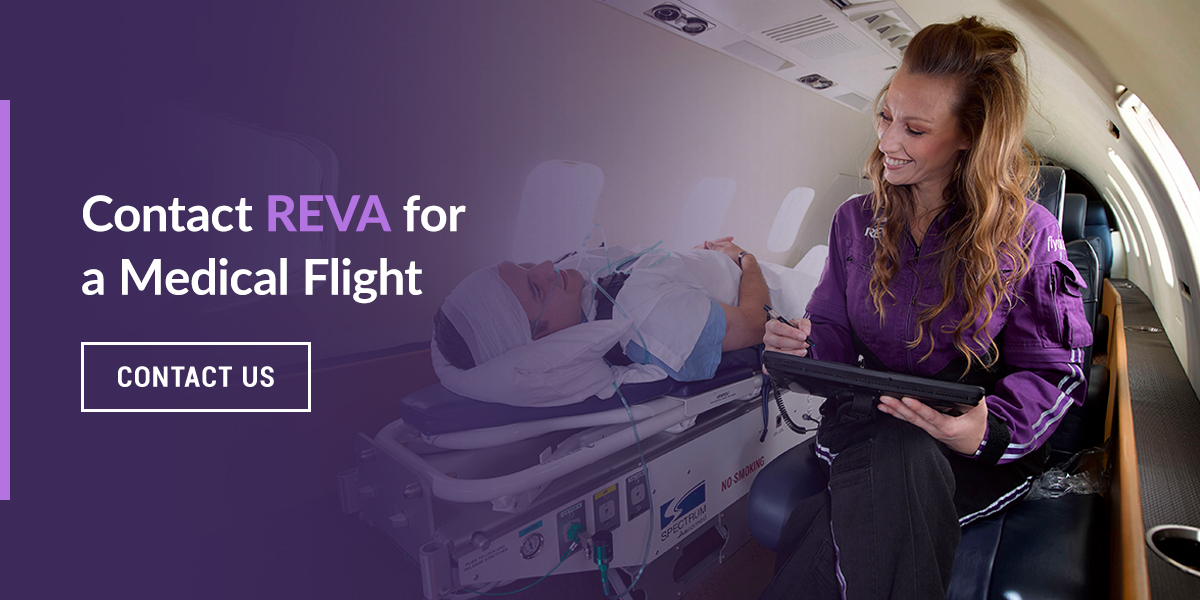Blog
STAYING ON THE FOREFRONT OF MEDICAL AIR TRANSPORTCasevac vs. Medevac: What Are the Differences?
Emergency transportation is essential for preserving the life and health of those who are sick or injured. Casevac and medevac are common types of urgent medical transportation that offer different benefits depending on a patient’s situation.
While a casevac often evacuates the individual to the nearest medical facility without the resources for en-route care, a medevac has a team of qualified medical professionals on standby during the drive or flight. Below, we’ll review their similarities and differences more in-depth for a better idea of when each service is appropriate.
What Is a Casevac?
Casevac is short for “casualty evacuation.” This transportation method conveys injured civilians or military members from fighting zones and battlegrounds to a medical facility. These evacuations are driven by urgency, so they are conducted by the closest team regardless of their medical background.
General-use vehicles or aircraft may also transport patients if they are readily available to move the injured individuals quickly, but they have limited medical equipment to care for patients en route. Unlike medevac flights that can involve mid- to long-range travel, casevac flights typically cover shorter distances.
Rotor-powered aircraft, such as helicopters, work best for casevac situations since they can land and take off from nearly any location. They don’t require a designated runway and can land on any terrain. Fixed-wing aircraft and ground transportation are also viable options, depending on the terrain accessibility and the proximity of medical centers.
Casevac transportation is for instances where time is of the essence and the injured individual is in a life-or-death situation. Slow response times and excess waiting periods can worsen their condition.
Typically, a casevac is sent to the scene to airlift and transfer the patient to the closest hospital so they can receive expert medical services. Therefore, the vehicle or aircraft often isn’t purpose-built. General-purpose aircraft can be used to ensure the patient reaches the closest medical center quickly, and the individual doesn’t have to wait for specialized transportation.
What Is a Medevac?
Medevac is short for “medical evacuation.” These evacuations take careful planning and organization to ensure safe and quick patient transport from various locations, such as an accident scene, a medical facility or even a cruise ship.
Some examples of medevacs include:
- Military air ambulances.
- Civilian Emergency Medical Services (EMS) vehicles.
- Civilian aeromedical helicopters.
Vehicles and aircraft used for medevac situations are purpose-built, meaning they have the equipment, personnel and space to properly tend to a patient throughout transport. A team of health care professionals accompanies the patient during the trip, providing mid-air care and properly handing them over to the medical facility upon arrival.
Fixed-wing aircraft are usually best for medevac situations since they can cover long distances quickly to help patients in urgent situations get to far-away medical centers. They also allow more room for medical equipment and personnel to care for patients during the flight.
A medevac differs from medical repatriation in that patients require immediate attention on a medevac flight. Repatriation is usually for individuals who have already received urgent care and are no longer in critical condition.
Similarities Between a Medevac and Casevac
Medevac and casevac operations share the same goal — transporting injured or sick patients quickly so they can get the medical attention they require. These evacuation methods focus on the safety and health of those being transported. Casevac aircraft are usually armored while medevac aircraft are protected by the Geneva Conventions, so both forms of evacuation offer security.
Casevac and medevac transport are for patients with injuries or sicknesses that pose a threat to their life or limbs, such as:
- Heart attacks
- Fractures
- Strokes
- Pulmonary problems
- Trauma
- Diseases
- Severe mental illness
- Head, neck or spine injuries
- Loss of blood
Casevac vs. Medevac: Key Differences
While a casevac and medevac both focus on transporting patients, they offer different benefits for various situations. Their main differences include:
- Reason for transport: Casevac transport is mainly for those injured on the battlefield or within a fighting zone, while a medevac accommodates a broader scope of patients.
- Level of planning: A casevac requires immediate action to get individuals to safety, while a medevac allows for a little more time to plan and get organized.
- Medical personnel: The closest unit on hand, whatever its specialties, usually responds to a casevac situation. Meanwhile, a medevac ensures trained medical professionals are dispatched for transport.
- Distance: Medevac transport is generally for medium- to long-distance trips, while casevac transport is often best for short distances.
- Urgency: Patients who require a medevac may or may not have received prior medical attention. These situations may not be as urgent as those for casevac patients, who have received no medical care and are in a dangerous situation.
Contact REVA for a Medical Flight
When you need medevac transportation, you can trust REVA to deliver high-quality services to get you to your destination safely and quickly. We are available 24/7 to assist with your medevac flight, so let us handle the details while you focus on recovery. Contact us today to learn more about our medevac services.


